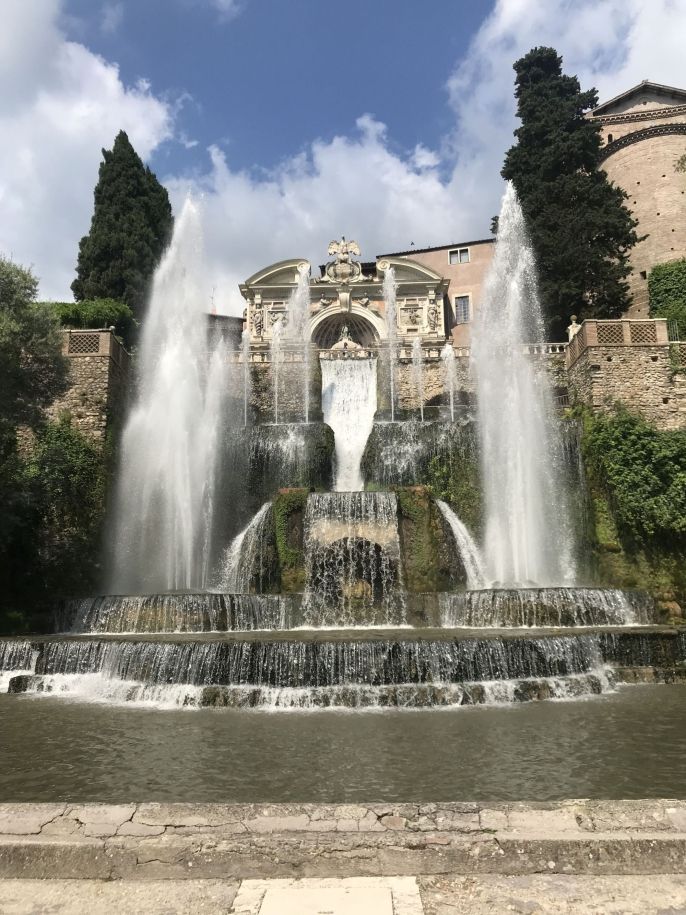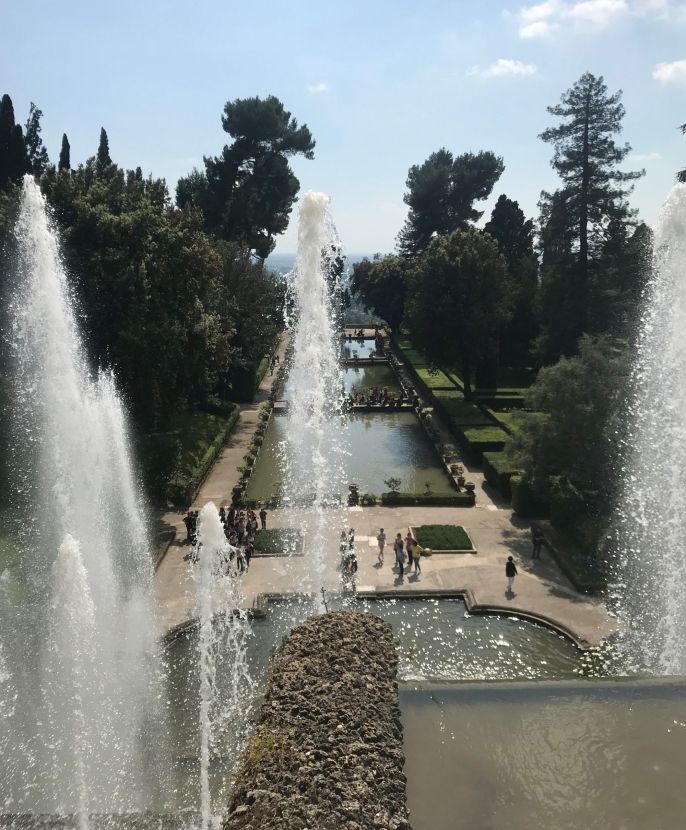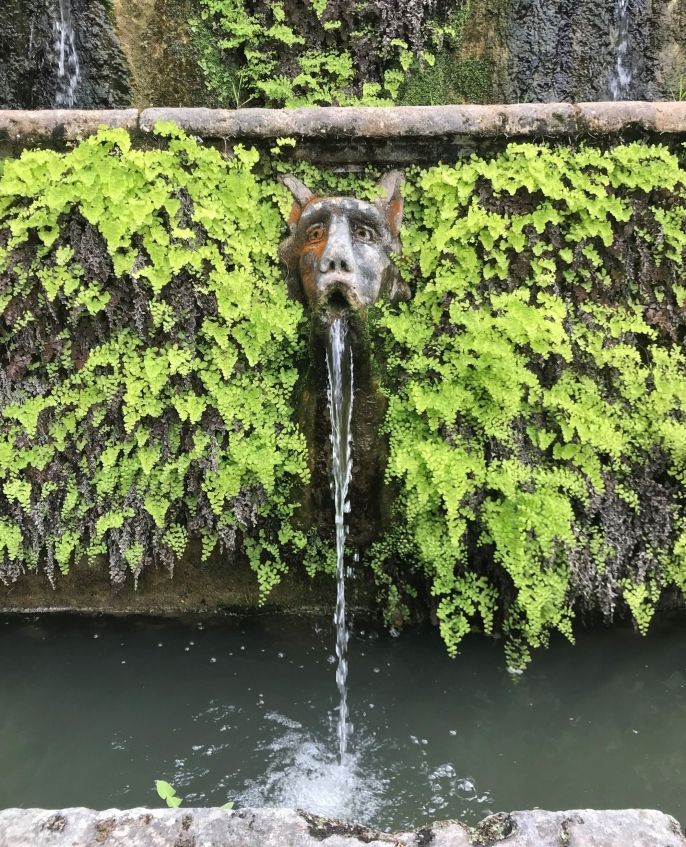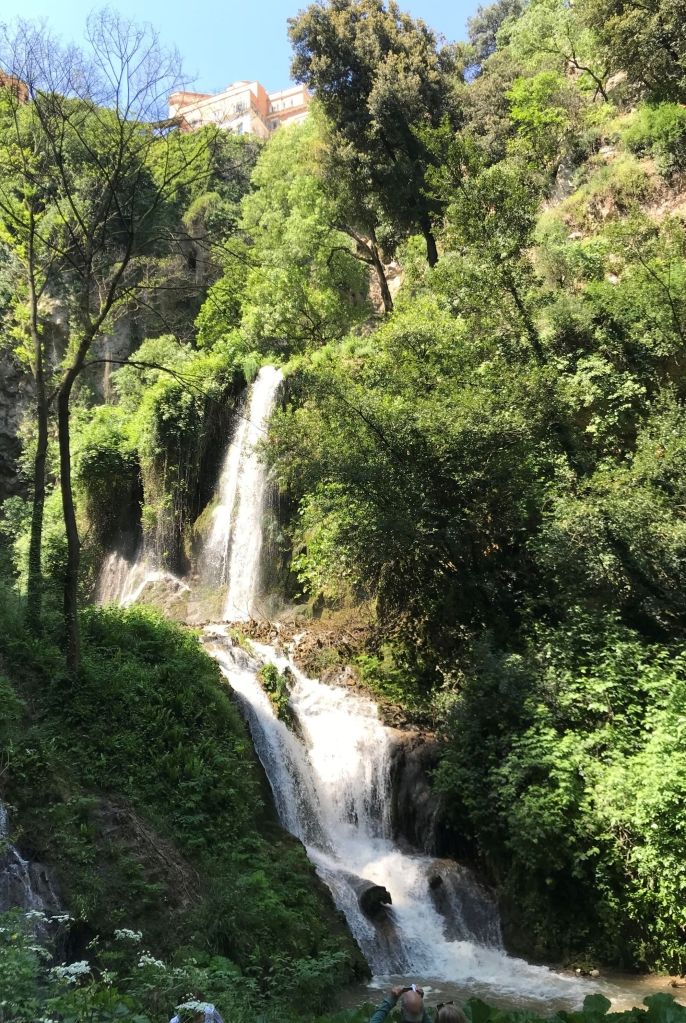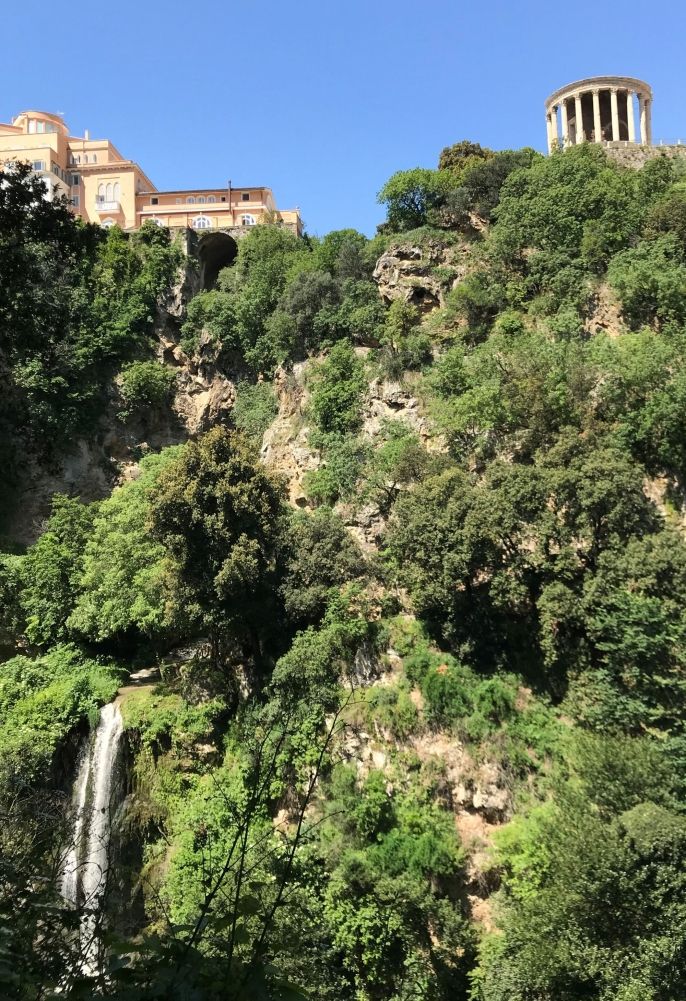Tivoli Day Trip with HSSA
Tivoli is a beautiful town about 30 kilometers east of Rome, surrounded by the hills. The city had been a popular summer residence since ancient Roman times due to its altitude, cooler temperatures and its proximity to the Villa Hadriana, the summer residence of the Emperor Hadrian I.
First thing in the morning, we visited Villa D’Este, a 16th-century villa in Tivoli, famous for its Italian Renaissance garden and especially for its profusion of fountains (in particular the Fountain of Venus, the Oval Fountain, the Fountain of Rometta and the Fountain of the Dragons).
The Villa was commissioned by Cardinal Ippolito II d'Este, Governor of Tivoli, who – alongside his family – was famous as a patron of the arts and of the humanist scholars of the Renaissance.
One of the main subjects which decorates both the interior of the Villa and the courtyard is the demigod Hercules and his 11th labor. As a matter of fact, Hercules was reputed to be a protector of the Tiburtine region – where the villa is located – and was claimed as an ancestor of the Este family. This is the reason why you can find golden apples inside Ippolito d’Este’s coat of arms: Hercules’ 11th labor consists of the theft of golden apples from the Garden of the Hesperides, where they were guarded by a dragon.
But the fame and glory of the Villa d'Este was above all established by its extraordinary system of fountains: 51 fountains and nymphaeum, 398 spouts, 364 water jets, 64 waterfalls, and 220 basins, fed by 875 meters of canals, channels and cascades, all working entirely by the force of gravity, without pumps.
Villa d’Este is now listed as a UNESCO world heritage site.
In the afternoon we visited Villa Gregoriana. Even though the name “Villa” might suggest it to be something similar to the above-mentioned one (a big mansion surrounded by gardens), it is rather a park, which hosted an ancient roman villa in the past.
Villa Gregoriana is a natural area of great historical value which is located in the steep valley between the right bank of the Aniene and the ancient Roman acropolis. The site is known – above all – for hosting the Great Waterfall and can be considered a very special example of a romantic garden, due to its conformation and correspondence with the taste of the aesthetic of the sublime, so dear to the romantics.
The park, commissioned by Pope Gregory XVI in 1835, consists mainly of thick woodlands with paths that lead to the caves of Neptune and the Sirens, which form part of a series of gorges and cascades, and to the Great Waterfall.
Villa Gregoriana was submitted in 2006 for consideration as a UNESCO World Heritage Site.
Related Posts

The Ultimate Guide to Quarter Study Abroad Programs at CIEE
If you’re a student attending an institution with a quarter system, bookmark this post as we provide the ultimate guide to studying abroad with our different quarter programs ! What... keep reading

EAT, DRINK, EXPLORE: ROME
BEST FOOD TO EAT IN ROME The Eternal City boasts many treasures, but among its top - la cucina Romana (Roman cuisine). One dish is so revered, it has achieved... keep reading
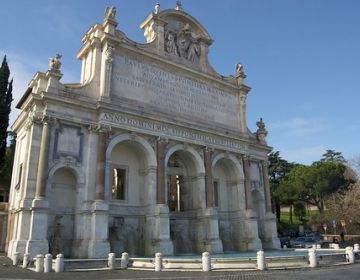
Secret and quiet places to discover in Rome
By Milo Spotti - Student Life and HSSA Assistant In Rome there are thousands of things to see, hundreds of experiences to do, dozens of places to visit. I am... keep reading
